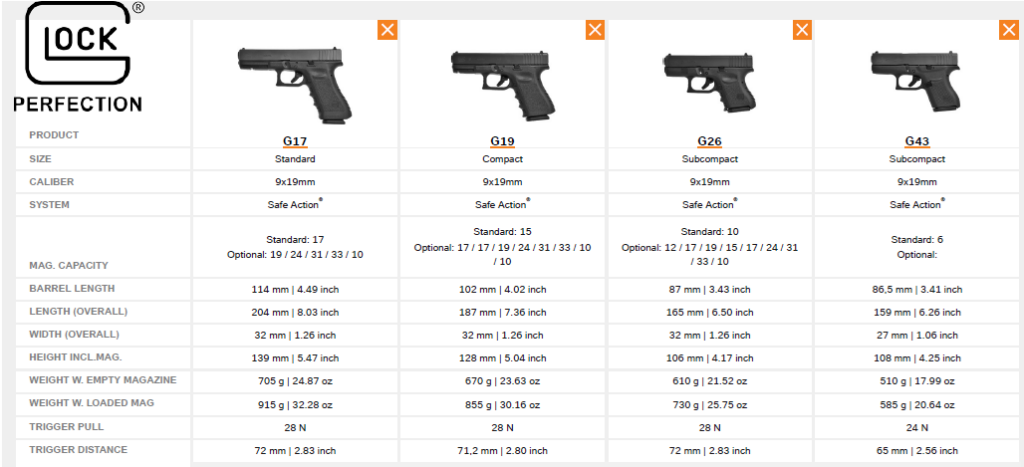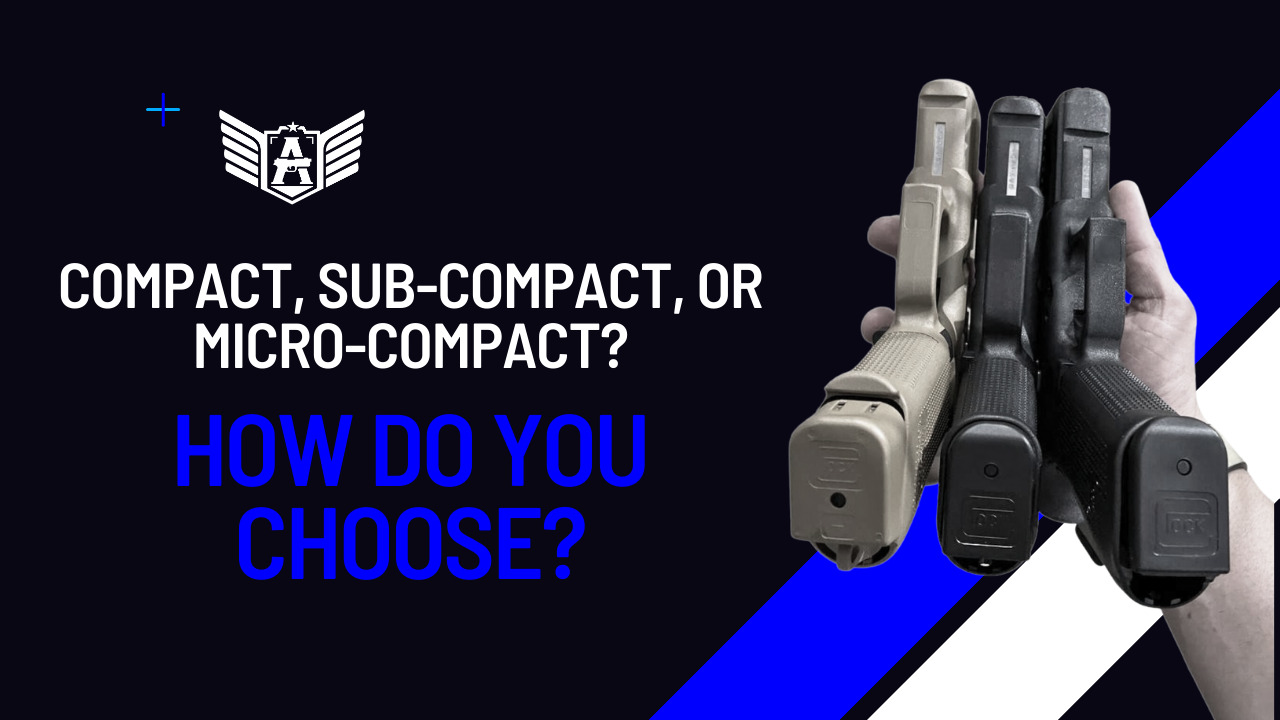
As materials and technologies advance, pistols seem to be getting smaller in an effort to find the best balance between capacity, controllability, and portability.
I’m unaware of any formal document that sets prerequisites for classifying a pistol as full-size, compact, sub-compact, or micro-compact, which essentially leaves us with a comparison method for appropriate allocation.
In logic, full-size firearms are considered the manufacturer’s standard, typically designed for overt use, with maximum barrel capacity of over 4 inches. For Glock, we would be talking about the Model 17.

At the opposite extreme, we have micro-compacts, which are the smallest pistols manufactured by the industry. These models may occasionally use smaller calibers, such as .380 ACP, and may even have single-stack magazines. Their primary goal is to be small and portable. An example would be the Glock 43, although on their official website, Glock classifies it as sub-compact (there is no micro-compact category on Glock’s official website).

So, in the middle, we are left with two options: compact and sub-compact. Compact pistols are slightly smaller than full-size ones in terms of barrel length and sometimes capacity. They are already designed for concealed carry while maintaining the main technical features of full-size pistols. Example: Glock G19.

Finally, we have sub-compacts. These are already quite small pistols, which can usually fit in the palm of the shooter’s hand. Often, it’s necessary to adapt the grip because either the pinky finger hangs off the grip or the thumb can extend beyond the muzzle when using a high and aggressive grip. Example: Glock G26.

I understand, Lucas, but which one should I choose?

Elementary, my young Padawan. This is an individual choice that should be made rationally, taking into account the following trade-off: the smaller the pistol, the more portable it becomes at the expense of technical losses such as capacity, for example.
If you are a large person who regularly wears heavy clothing, it’s likely that a full-size or compact pistol can be carried with you daily without compromising your concealment. If you need to wear clothing that makes concealing the weapon difficult, such as tight suits or formal wear, sub-compact and micro-compact options should be considered.
There’s also the comfort factor. Even for larger individuals, carrying small firearms is much more comfortable. For those who choose to carry in the appendix position, a piece of metal restricting the mobility of your hip can make some everyday activities, like squatting properly, impossible or challenging.
Having a large pickup truck is great for comfort and capacity, but adapting its use to a densely populated urban center with narrow streets can be challenging.
Regardless of the pistol you choose, it’s important to train repeatedly with it. I’ve seen shooters carrying sub-compact pistols and training with full-size guns, which is a significant mistake in the motor learning process.
Make your choice wisely and train until you reach satisfactory metrics for the defensive use of your equipment.




